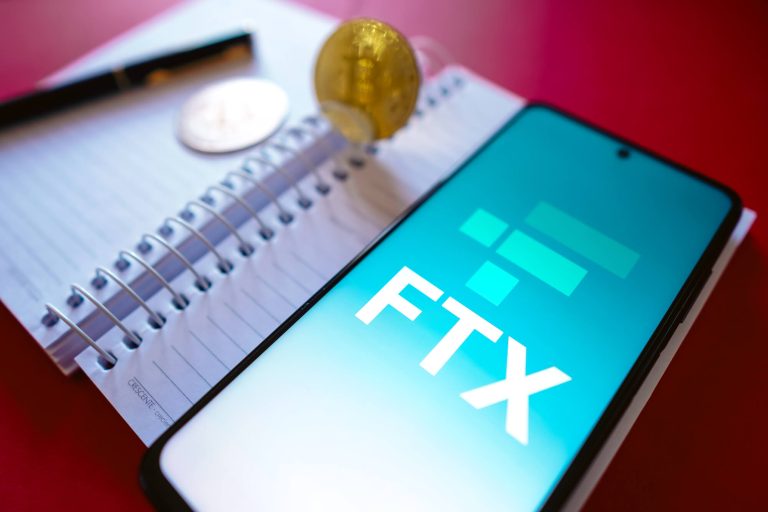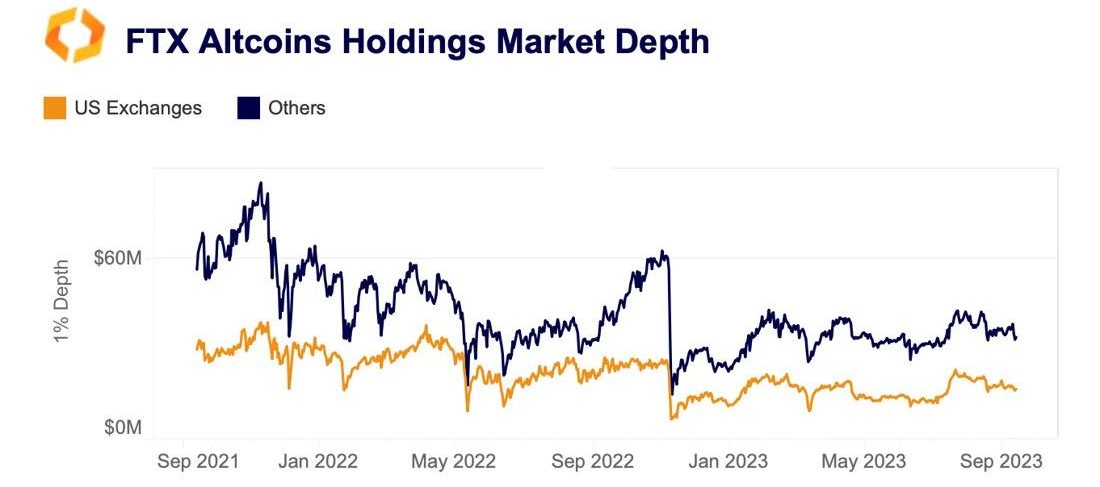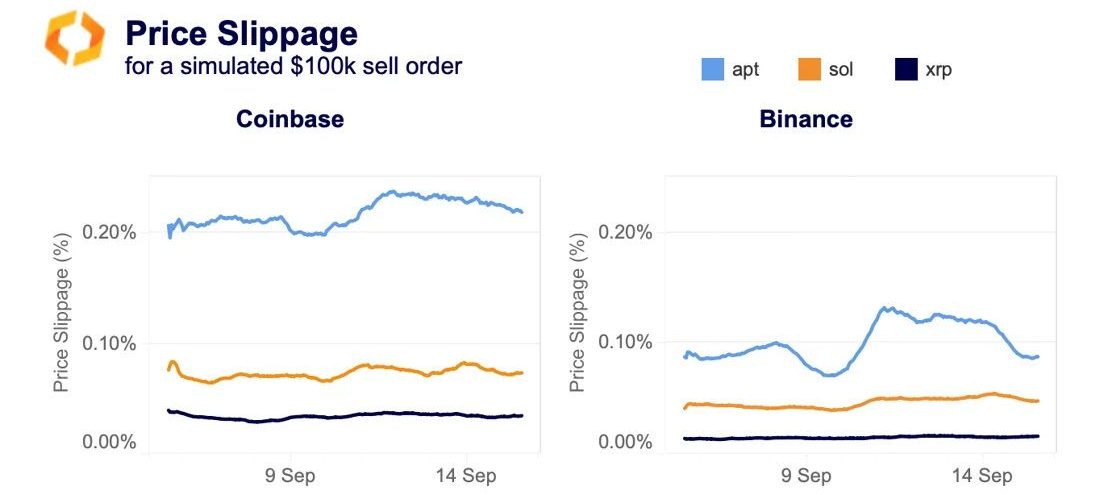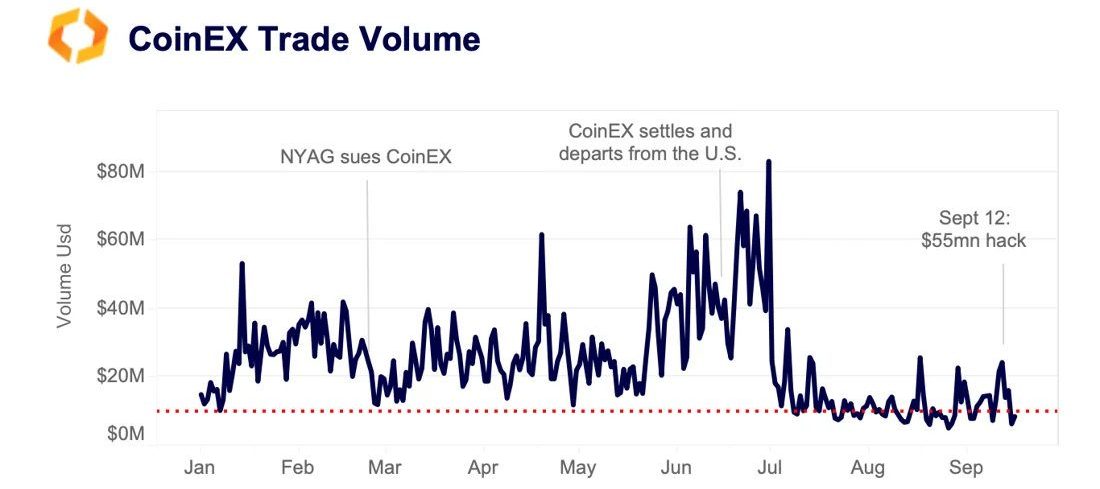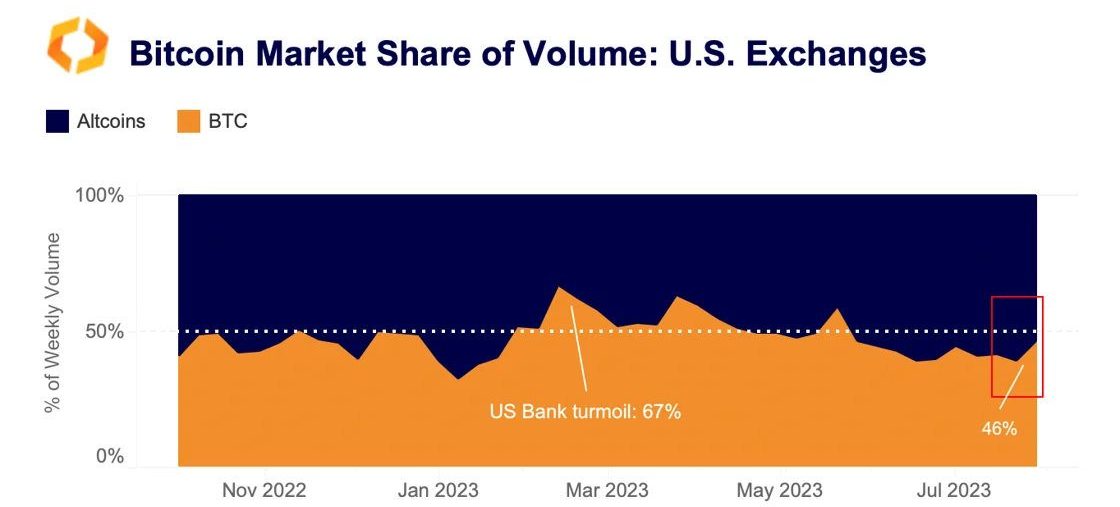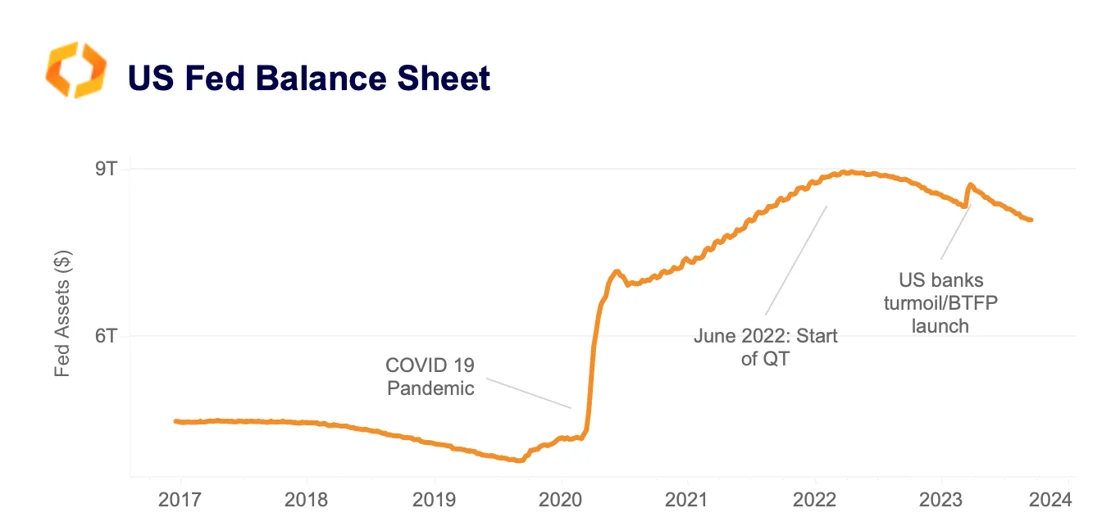A summarizing review of what has been happening at the crypto markets of the past week. A look at trending sectors, liquidity, volatility, spreads and more. The weekly report in cooperation with market data provider Kaiko.
Bitcoin (BTC) made some early morning gains, crossing $27k for the first time since August 31. This capped a volatile week triggered by concerns around FTX's altcoin liquidations. In other news, Deutsche Bank will offer crypto custody for institutional clients and the ECB hiked rates to an all-time high.
Could FTX liquidations trigger an altcoin crash?
Last week, FTX gained court approval to begin liquidating its significant crypto holdings estimated at $3.4bn. According to the latest court documents, FTX holds more than $1.1bn in SOL as well as around $870mn in BTC, ETH, and USDT. Aptos (APT) ($137mn) is its second largest altcoin holding followed by XRP ($119mn), Bit DAO's token BIT ($49mn) and Stargate Finance's STG token ($46mn). It should be noted that these valuations assume that the crypto asset can be liquidated at current prices.
The sales will happen in blocks of $50mn to $100mn per week (Saturday through Friday). It is unclear whether FTX management will offload its holdings directly via centralized exchanges or over-the-counter market makers. However, in both cases the market impact could be significant, as altcoin volumes and liquidity remain at multi-year lows. While OTC transactions are less impactful, requesting a quote from a market maker could result in information leakages and lead to a price decline. Even before the plan was approved by the court on Wednesday, altcoin prices plummeted in anticipation that the sales will have a significant market impact. SOL and APT funding rates remain negative.
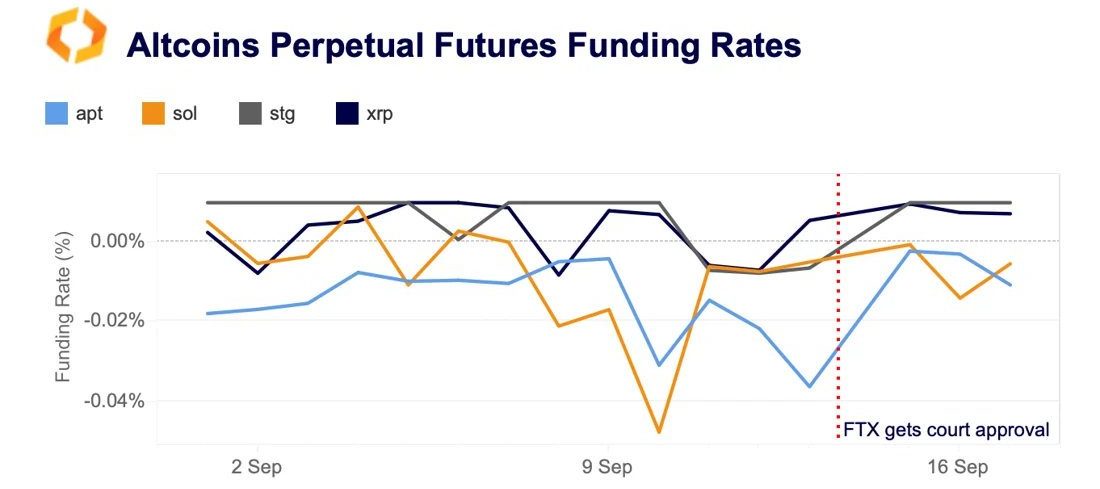
Looking at the average daily volume and market depth of the top FTX crypto asset holdings, BTC and Ethereum (ETH) are by far the most liquid with average daily volumes of $9bn and $3.4bn respectively.
Next in line is XRP, which was recently re-listed by major U.S. exchanges and has seen both trade volume and market depth surge. STG and BIT are the least liquid holdings, with average daily volumes of just a few million and market depth at just a few hundred thousand. Taking a global view of market depth for FTX's crypto asset holdings, all have seen a significant drop in liquidity over the past year.
The most liquid altcoins on FTX's balance sheet have seen their liquidity decline to $50mn, down from $90mn pre-collapse. This is just half the $100mn upper weekly sales limit. Furthermore, liquidity is increasingly concentrated on offshore exchanges making selling only on U.S. markets costlier.
Price slippage for a simulated $100k market sell order - defined as the difference between the expected price and the execution price - is significantly higher on Coinbase than on Binance.
Ultimately, the data shows that it will be difficult to maintain stable prices for any significant altcoin liquidations.
CoinEX volume remains stable despite hack
Last week, Hong Kong-based crypto exchange CoinEX suffered a multi-million-dollar exploit, thought to be perpetrated by North Korea’s Lazarus Group. The exchange revealed that ETH, SOL, MATIC, TRX and other tokens were stolen from one of its hot wallets used to temporarily hold users’ tokens. Despite the hack, daily trade volumes on the exchange remained lackluster at around $20mn. Trade volumes fell in June after CoinEX agreed to a $1.8mn settlement with the New York Attorney General and began winding down its U.S. operations.
BTC dominance is on the rise
The share of BTC traded on U.S.-available exchanges has increased from 39% to 46% in early September, marking a reversal from the mostly downward trend observed since mid-June. The increase comes after the Grayscale ruling heightened the likelihood of a BTC spot ETF approval and was driven by Coinbase and Kraken. Rising BTC dominance on U.S. exchanges typically correlates with periods of strong institutional demand. However, despite the recent uptick, BTC market share remains well below its multi-year high of 67% hit during the U.S. banking turmoil in March, while trade volumes are still muted, suggesting limited market participation.
Fed balance sheet declines to lowest level since 2021
The U.S. central bank is widely expected to hold rates unchanged this week and is nearing the end of its hiking cycle. However, the process of balance sheet reduction, also known as quantitative tightening or QT has accelerated over the past year. Last week the Fed’s total assets fell to $8.1tn, their lowest level since mid-2021. This could weigh on risk assets especially as the U.S. Treasury has boosted bond issuance to replenish its account at the Fed (TGA) after a debt ceiling deal was finally reached in early June.

